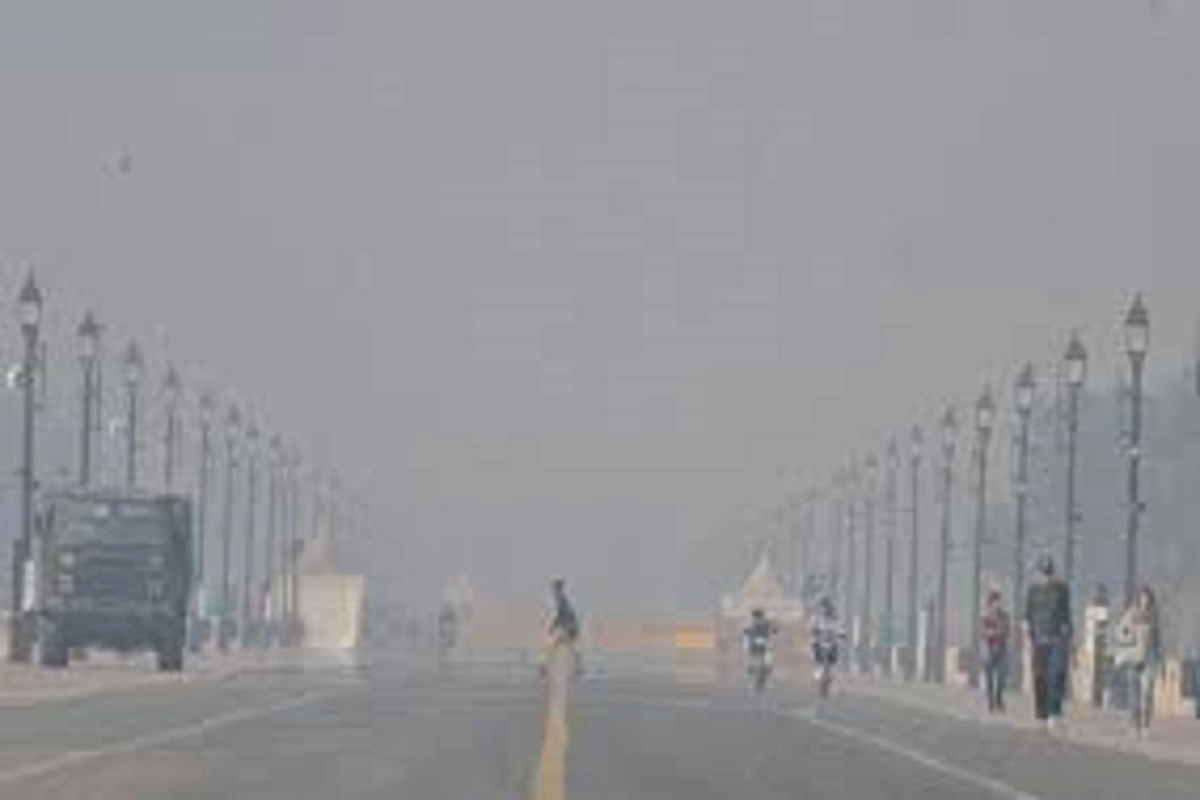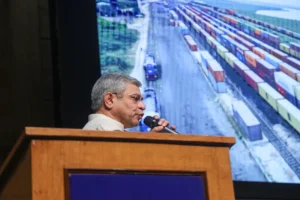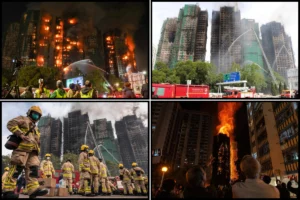
A view of India's Kartvya Path on Tuesday through thick pollution.
New Delhi: The Central Pollution Control Board (CPCB) reported an air quality index (AQI) of 420 at 8 a.m. on Wednesday, placing Delhi’s pollution levels in the severe category.
The India Meteorological Department (IMD) reports that the city awoke to 800 meters of general visibility at 8 a.m. with shallow fog and mist. At 4 p.m. on Tuesday, Delhi’s 24-hour average AQI was reported at 395 (extremely poor), and an overnight decrease trend was noted.
The city awoke to light fog in the morning, according to the IMD data, and the sky will gradually clear in the afternoon and evening. According to the IMD, the greatest and lowest temperatures would be approximately 31 and 16 degrees Celsius, respectively.
Tuesday saw a brief return to the “very poor” category for Delhi’s air quality, but it soon returned to the “severe” category as a result of the wind direction shifting to the northwest over the previous 24 hours, bringing stubble encroachment towards the metropolis. The Delhi 24-hour average AQI dropped to 392 (very poor) at 2:00 pm, then to 395 (extremely poor) at 5:00 pm, and finally to 402 (severe) at 7:00 pm.
Also Read : In Rajasthan, Amit Shah barely makes it out before his “chariot” hits a power cord
According to data from the Decision Support System (DSS), stubble burning’s projected impact to Delhi’s air pollution decreased from Tuesday’s 37.8% to roughly 33.07% on Wednesday. The next largest contributor to Delhi’s PM 2.5 concentration, with an estimated proportion of 12.64%, was the transportation sector. The two most common air pollutants in Delhi are still PM2.5 and PM10.
Due to the influence of significantly stronger winds, the Early Warning System (EWS) for Delhi predicts that the AQI would likely improve back to “very poor” on Thursday and remain that way through Saturday. According to the IMD, there’s a chance of drizzle in Delhi on November 10.
IMD scientist Kuldeep Srivastava reported that on Tuesday between 10 am and 6 pm, wind speeds in Delhi were measured to be between six and eight km/h. As the western disturbance approaches on Thursday, we should anticipate a gradual rise in wind speed. On Friday, there may even be sporadic drizzle. The wind may reach 15 km/h by Saturday, he said.
The highest temperature recorded in Delhi was 31.7 degrees Celsius, which is two degrees higher than average. 14.9 degrees, which is one degree over average. By Friday, the impending western disturbance is predicted to have raised the minimum temperature even higher, to about 17 degrees Celsius. According to the IMD, the maximum temperature will stay between 30 and 31 degrees Celsius.
Also Read : 1 lakh Indian workers to be hired by Israel to replace Palestinians: Report
On Wednesday, the Graded Response Action Plan (GRAP)’s stage 4 measures are still in effect. On Sunday night, the Commission for Air Quality Management (CAQM) announced curbs under stage 4. Its provisions forbid diesel light commercial vehicles registered outside of Delhi and not meeting BS VI standards from entering the nation’s capital. In a similar vein, trucks are not permitted to enter Delhi and neither are any diesel-powered medium- and heavy-goods vehicles (MGV) or HGV allowed to operate in the capital. All linear construction projects, including flyovers, roads, and highways, have also been halted under this category.
The success of the Aam Aadmi Party government’s odd-even car restriction program in Delhi was questioned by the Supreme Court on Tuesday, characterizing it as “all optics.” The Delhi government’s attorney was questioned by the top court, which was considering a case about the severe air pollution in the Delhi-National Capital Region (NCR), if the odd-even program had been successful when it was first put into place.
The Court further ordered that crop residue burning be stopped “forthwith” in Punjab, Haryana, Uttar Pradesh, and Rajasthan since it could not allow “people to die” as a result of pollution.
To read more such news, download Bharat Express news apps


















